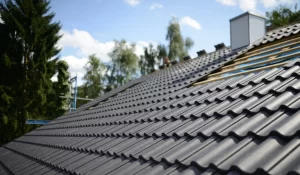How to Avoid Common Plumbing Mistakes

The most common plumbing mistake is not getting professional help. While calling a plumbing specialist can cost you a few dollars, it’s always better than trying to repair the problem yourself. Plumbing mistakes can cause clogs, leaks, and other problems in your home. Keeping a few simple tips in mind will help you avoid a common plumbing mistake and keep your plumbing working properly.
Plumbing is a highly technical field that involves numerous essential parts of a home. If you make a mistake, it can shut down your water, waste, air conditioning, drainage, and irrigation systems. As a result, it’s important to avoid common plumbing mistakes that can cost you a lot of money and time.
One of the first things you need to do when working on your plumbing is turn off the water. Many DIYers forget to shut off the main water supply valve, which can result in a disastrous flood. Not only can you lose your home’s contents, but you might also cause extensive damage to your home. It’s worth hiring a plumber when you’re working on a large plumbing project, because they’ll be able to guarantee that it’s done correctly.
Another common plumbing mistake is choosing the wrong material for your pipes. Choosing the wrong type or size of pipe can result in serious problems down the line. Copper pipe will corrode very quickly, so it’s important to choose the right material for your project. It’s also important to use the right tool for the job. For example, if you want to connect a copper pipe to a galvanized metal pipe, you need to make sure you have the correct connector.
Another common plumbing mistake is flushing items that shouldn’t be flushed. Toilets shouldn’t have large objects like toys or feminine hygiene products in them. These can become stuck and eat away the plumbing walls. Not only that, but they can damage metal pipes or PVC pipes as well. Fortunately, there are plenty of ways to avoid plumbing mistakes and make your plumbing work better.
Using a 45-degree elbow to connect a p-trap to a drain can be problematic. These elbows are in violation of plumbing codes and will cause drainage water to flow more quickly down the slope, allowing sewer gases to enter your home. For this reason, you should use a sanitary tee instead.
When you use a plunger to unclog a toilet, you should make sure the plunger is designed for the size of the pipe. The plunger can be used for both toilets and sinks. If the plunger doesn’t work, you should use a snake or auger designed for the specific drain. The plunger should be placed over the drain and moved up and down to create suction. If you’re unable to do this, you can also use a tweezers to remove clumps from the drain. You can also use a chemical drain cleaner, which can easily dislodge a clog. If you don’t have these tools at home, call a plumber.







